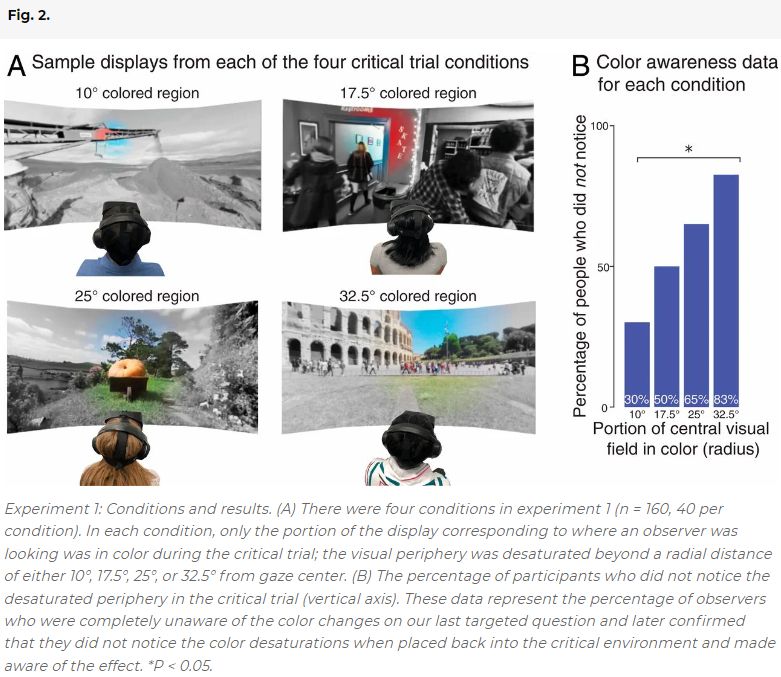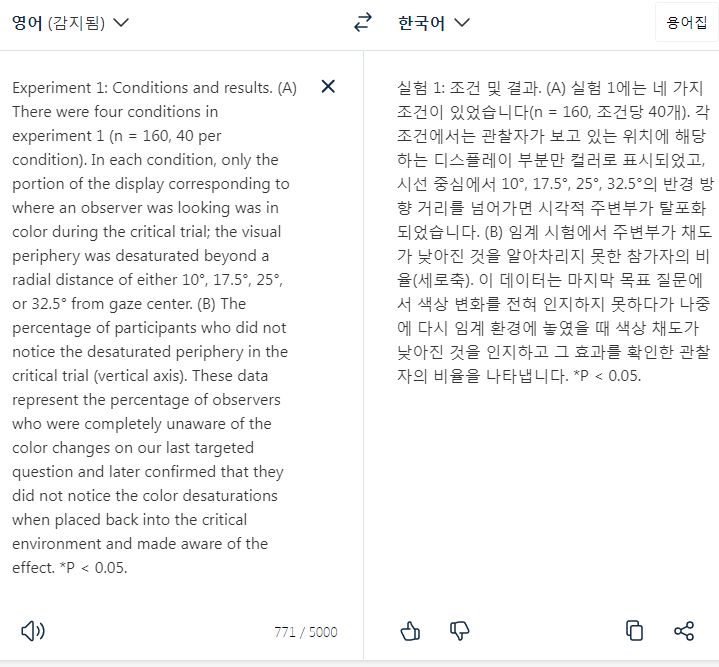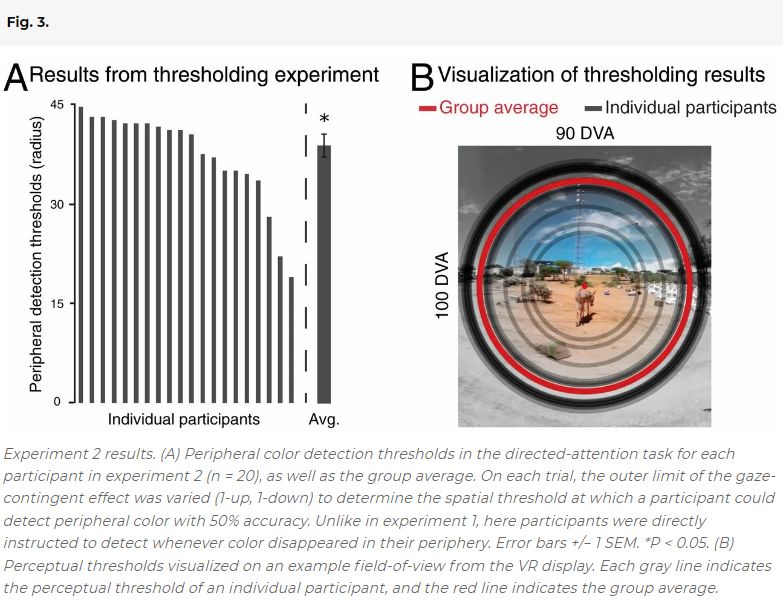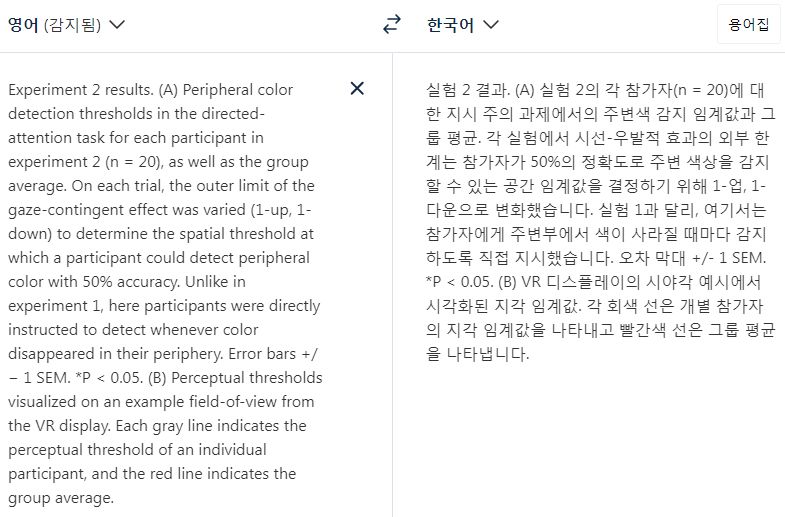생활공공기관
도구
- 스마트폰,태블릿 화면크기비교
- 양쪽 윈도우키를 한영한자키로(AutoHotKey)
- 매크로: Robotask Lite
- 파일이름변경: ReNamer Lite
- 파일압축: 반디집
- 공공서식 한글(HWP편집가능, 개인비영리)
- 오피스: 리브레오피스(LibreOffice)
- 텍스트뷰어: 이지뷰어
- PDF: FoxIt리더, ezPDF에디터
- 수학풀이: 울프램 알파 ( WolframAlpha )
- 수치해석: 셈툴, MathFreeOn
- 계산기: Microsoft Mathematics 4.0
- 동영상: 팟플레이어
- 영상음악파일변환: 샤나인코더
- 이미지: 포토웍스
- 이미지: FastStone Photo Resizer
- 화면갈무리: 픽픽
- 이미지 편집: Paint.NET, Krita
- 이미지 뷰어: 꿀뷰
- 국립중앙도서관 소장자료 검색
- KS국가표준인증종합정보센터
- 대한무역투자진흥공사(KOTRA) 해외시장뉴스
- 엔팩스(인터넷팩스발송)
- 구글 드라이브(문서도구)
- MS 원드라이브(SkyDrive)
- 네이버 N드라이브
- Box.com (舊 Box.net)
- Dropbox
- 구글 달력
- 모니터/모바일 픽셀 피치 계산
- Intel CPU, 칩셋 정보
- MS윈도우 기본 단축키
- 램디스크
- 초고해상도 관련
- 게임중독
- 표준시각
- 전기요금표/ 한전 사이버지점
- HWP/한컴오피스 뷰어
- 인터넷 속도측정(한국정보화진흥원)
- IT 용어사전
- 우편번호찾기
- 도로명주소 안내, 변환
- TED 강연(네이버, 한글)
- 플라톤아카데미TV
- 세바시
- 명견만리플러스
- 동아사이언스(과학동아)
- 과학동아 라이브러리
- 사이언스타임즈
- 과학잡지 표지 설명기사
- 칸아카데미
- KOCW (한국 오픈 코스웨어) 공개강의
- 네이버 SW 자료실
- 네이버 SW자료실, 기업용 Free
- 계산기
공공데이터베이스
PC Geek's
딥엘(DeepL) 인공지능번역기, 괜찮네요/:/ 실제 시력 중 색상 인식의 한계: 집중해 보는 부분만 정보량을 많이 사용하는 두뇌의 시각정보처리 본문
북마크해두고 쓸 만합니다. 무료서비스에서는 한 번에 5000자까지만 번역합니다.
DeepL

https://www.deepl.com/translator
DeepL 번역: 세계에서 가장 정확한 번역기
텍스트 및 전체 문서 파일을 즉시 번역하세요. 개인과 팀을 위한 정확한 번역. 매일 수백만 명이 DeepL로 번역합니다.
www.DeepL.com
예를 들어, 아래 논문을 보겠습니다. VR헤드셋을 이용해 우리 눈과 뇌가 시각정보를 받아들이고 처리하는 방식을 연구한 것.
당장 생각할 수 있는 응용으로는, '시야에서 눈동자가 바라보는 정면을 제외한 나머지 부분에 대해 렌더링 품질과 색상대역폭을 줄여도 큰 문제가 없겠다' 이런 생각이 드네요.
https://www.pnas.org/doi/10.1073/pnas.1922294117
제목과 초록의 원문과 번역
The limits of color awareness during active, real-world vision
Significance
Color is a foundational aspect of visual experience that aids in segmenting objects, identifying food sources, and signaling emotions. Intuitively, it feels that we are immersed in a colorful world that extends to the farthest limits of our periphery. How accurate is our intuition? Here, we used gaze-contingent rendering in immersive VR to reveal the limits of color awareness during naturalistic viewing. Observers explored 360° real-world environments, which we altered so that only the regions where observers looked were in color, while their periphery was black-and-white. Overall, we found that observers routinely failed to notice when color vanished from the majority of their visual world. These results show that our intuitive sense of a rich, colorful world is largely incorrect.
Abstract
Color ignites visual experience, imbuing the world with meaning, emotion, and richness. As soon as an observer opens their eyes, they have the immediate impression of a rich, colorful experience that encompasses their entire visual world. Here, we show that this impression is surprisingly inaccurate. We used head-mounted virtual reality (VR) to place observers in immersive, dynamic real-world environments, which they naturally explored via saccades and head turns. Meanwhile, we monitored their gaze with in-headset eye tracking and then systematically altered the visual environments such that only the parts of the scene they were looking at were presented in color and the rest of the scene (i.e., the visual periphery) was entirely desaturated. We found that observers were often completely unaware of these drastic alterations to their visual world. In the most extreme case, almost a third of observers failed to notice when less than 5% of the visual display was presented in color. This limitation on perceptual awareness could not be explained by retinal neuroanatomy or previous studies of peripheral visual processing using more traditional psychophysical approaches. In a second study, we measured color detection thresholds using a staircase procedure while a set of observers intentionally attended to the periphery. Still, we found that observers were unaware when a large portion of their field of view was desaturated. Together, these results show that during active, naturalistic viewing conditions, our intuitive sense of a rich, colorful visual world is largely incorrect.
실제 시력 중 색상 인식의 한계
중요성
색은 시각적 경험의 기본 요소로서 사물을 구분하고, 음식의 출처를 식별하고, 감정을 표현하는 데 도움을 줍니다. 직관적으로 우리는 주변부의 가장 먼 곳까지 확장된 다채로운 세계에 빠져 있는 듯한 느낌을 받습니다. 우리의 직관은 얼마나 정확할까요? 유니티는 몰입형 VR에서 시선 조건부 렌더링을 사용하여 자연주의적 시청 시 색 인식의 한계를 드러냈습니다. 관찰자는 360° 실제 환경을 탐색했으며, 관찰자가 바라보는 영역만 컬러로 표시되고 주변은 흑백으로 표시되도록 변경했습니다. 그 결과, 관찰자들은 대부분의 시각 세계에서 색상이 사라져도 이를 알아차리지 못하는 경우가 많았습니다. 이러한 결과는 풍부하고 다채로운 세계에 대한 우리의 직관적인 감각이 대부분 틀렸다는 것을 보여줍니다.
Abstract
색은 시각적 경험을 촉발하여 세상에 의미와 감정, 풍요로움을 불어넣습니다. 관찰자는 눈을 뜨자마자 전체 시각 세계를 아우르는 풍부하고 다채로운 경험에 대한 즉각적인 인상을 받습니다. 여기에서는 이러한 인상이 놀랍도록 부정확하다는 것을 보여줍니다. 우리는 헤드마운트 가상현실(VR)을 사용하여 관찰자를 몰입감 있고 역동적인 실제 환경에 배치하고, 관찰자는 몸을 움직이고 고개를 돌리며 자연스럽게 탐색했습니다. 한편, 헤드셋 내 시선추적을 통해 관찰자의 시선을 모니터링한 다음, 관찰자가 보고 있는 장면의 일부만 컬러로 표시하고 나머지 장면(즉, 시각적 주변부)은 완전히 채도가 낮도록 시각적 환경을 체계적으로 변경했습니다. 실험 결과, 관찰자들은 이러한 시각적 세계의 급격한 변화를 전혀 인지하지 못하는 경우가 많았습니다. 가장 극단적인 경우, 관찰자의 거의 3분의 1이 시각적 디스플레이의 5% 미만이 컬러로 표시될 때 이를 알아차리지 못했습니다. 이러한 지각 인식의 한계는 망막 신경 해부학이나 전통적인 심리물리학적 접근법을 사용한 말초 시각 처리에 대한 이전 연구로는 설명할 수 없었습니다. 두 번째 연구에서는 일련의 관찰자가 의도적으로 주변을 주시하는 동안 계단 절차를 사용하여 색상 감지 임계값을 측정했습니다. 그럼에도 불구하고 관찰자들은 시야의 많은 부분이 포화 상태일 때 이를 인지하지 못한다는 사실을 발견했습니다. 이러한 결과를 종합하면 활동적이고 자연스러운 시청 조건에서는 풍부하고 다채로운 시각 세계에 대한 직관적 감각이 크게 잘못되었다는 것을 알 수 있습니다.
와.. 자연스럽네요..
본문으로 들어가면, 배경지식이 없이는 번역문을 봐도 모를 내용입니다. 저도 마찬가지. 그래서 넘어가고 몇 가지만.
그림1은 동영상입니다. 저자들이 실험을 어떻게 했고, 참가자들에게 어떤 영상을 보여줬는지 알려줍니다. 짧으니 꼭 보세요. 그래야 아래 내용을 조금이라도 이해하기 편합니다.




Discussion 부분 원문과 번역문
Discussion 토론
Here, we used gaze-contingent rendering in immersive VR to reveal the limits of color awareness during real-world vision. When observers were naturally engaged with a visual scene, they routinely failed to notice the disappearance of color from most of their visual world. Observers’ lack of awareness was heavily influenced by attention: when intentionally looking for desaturations in the periphery, observers were far more sensitive to a lack of color in their visual environment. However, even when attending to the periphery, they still failed to detect the absence of color across large portions of the visual world. Together, these results demonstrate a surprising lack of awareness of peripheral color in everyday life and raise a number of important questions.
여기에서는 몰입형 VR에서 시선 조건부 렌더링을 사용하여 실제 시각에서 색 인식의 한계를 드러냈습니다. 관찰자가 시각적 장면에 자연스럽게 몰입할 때 대부분의 시각적 세계에서 색이 사라지는 것을 알아차리지 못하는 경우가 많았습니다. 관찰자의 인식 부족은 주의력의 영향을 많이 받았는데, 의도적으로 주변부의 채도를 찾을 때 관찰자는 시각 환경의 색상 부족에 훨씬 더 민감하게 반응했습니다. 그러나 주변부에 주의를 기울일 때에도 시각 세계의 많은 부분에서 색이 없는 것을 감지하지 못했습니다. 이러한 결과는 일상 생활에서 주변 색상에 대한 인식이 놀라울 정도로 부족하다는 것을 보여주며 몇 가지 중요한 질문을 제기합니다.
First, how do these findings relate to the neurobiology of the retina? It is well established that the vast majority of color-sensitive cone cells are concentrated around the fovea, with considerably fewer cone cells in the far periphery (34). However, the implications of retinal organization for peripheral color perception are thought to be relatively minor for several reasons. Contrary to popular belief, the density of cone cells in the retinal periphery is quite significant, with roughly 4,000 cone cells per mm2 (36). Moreover, although color sensitivity falls off with eccentricity for small targets (21–23), color perception in the periphery is nearly as good as in the fovea when the size of peripheral stimuli is scaled to account for the cortical magnification factor (15, 18, 21, 24-26). Consistent with these findings, in experiment 1, once we directed observers’ attention toward the periphery to show them the critical manipulations on the last trial, not a single observer had difficulty differentiating between when the scenes were fully colored and when they were partially desaturated. Thus, our findings cannot simply be attributed to limitations placed on visual performance by retinal organization.
첫째, 이러한 발견은 망막의 신경생물학과 어떤 관련이 있을까요? 색에 민감한 원추세포의 대부분이 중심와 주변에 집중되어 있고 원주변에는 원추세포가 훨씬 적다는 사실은 잘 알려져 있습니다(34). 그러나 망막 조직이 주변부 색 지각에 미치는 영향은 여러 가지 이유로 상대적으로 미미한 것으로 생각됩니다. 일반적인 믿음과는 달리 망막 주변부의 원추세포 밀도는 mm2당 약 4,000개로 상당히 높습니다(36). 또한 작은 표적의 경우 편심에 따라 색 감도가 떨어지지만(21-23), 피질 확대 계수를 고려하여 주변부 자극의 크기를 조정하면 주변부의 색 지각은 중심와에서와 거의 비슷합니다(15, 18, 21, 24-26). 이러한 결과와 일관되게, 실험 1에서 마지막 실험에서 중요한 조작을 보여주기 위해 관찰자의 주의를 주변으로 향하게 한 결과, 장면이 완전히 채색된 경우와 부분적으로 채도가 낮아진 경우를 구분하는 데 어려움을 겪은 관찰자는 한 명도 없었습니다. 따라서 이 결과는 단순히 망막 조직에 의한 시각적 성능의 한계 때문이라고 볼 수 없습니다.
Second, why did our observers consistently fail to notice that their periphery was desaturated if it is possible to detect color in the periphery using standard psychophysical approaches? We hypothesize that this apparent discrepancy likely arises from the way that observers engaged with their surroundings in the active, real-world viewing conditions employed in our study. In traditional psychophysical paradigms, attention is artificially separated from fixation, covertly deployed to the peripheral target location. In contrast, during real-world viewing conditions, where participants make saccades ∼3–4 times per second, spatial attention is thought to tightly track the current and upcoming fixation location, likely restricting peripheral awareness (27, 28). Thus, during active vision, attention is likely deployed in a drastically different manner relative to standard psychophysical procedures (37). Further, our study sought to test the limits of color perception in real-world environments, which are considerably more complex than standard psychophysical displays. It is very likely that our results stem, at least to some degree, from the crowding inherently imposed by natural, cluttered scenes (5, 6), despite the statistical regularities in natural images that provide information about spatial structure, spatial frequencies, and, critically, color distributions (29–32). Thus, we argue that our results are not inconsistent with prior studies of peripheral color sensitivity: the results we report here do not represent the limit of color sensitivity in the peripheral visual field measured using psychophysical approaches, but rather the limit of perceptual awareness during active vision in real-world scenes.
둘째, 표준 심리물리학적 접근법을 사용하여 주변부의 색을 감지할 수 있다면 왜 관찰자들은 주변부가 채도가 낮아진 것을 지속적으로 알아차리지 못했을까요? 우리는 이러한 명백한 불일치가 우리 연구에서 사용된 능동적인 실제 시야 조건에서 관찰자들이 주변 환경에 관여하는 방식에서 비롯되었을 가능성이 높다고 가정합니다. 전통적인 심리물리학적 패러다임에서는 주의가 고정과 인위적으로 분리되어 주변 목표 위치에 은밀하게 배치됩니다. 이와는 대조적으로, 참가자들이 초당 3~4회 시선 이동을 하는 실제 시각 조건에서는 공간적 주의가 현재 및 다가오는 고정 위치를 밀접하게 추적하여 주변 인식을 제한하는 것으로 생각됩니다(27, 28). 따라서 활성 시각 동안 주의는 표준 정신물리학적 절차에 비해 크게 다른 방식으로 전개될 가능성이 높습니다(37). 또한, 본 연구는 표준 심리물리 디스플레이보다 훨씬 더 복잡한 실제 환경에서 색상 인식의 한계를 테스트하고자 했습니다. 공간 구조, 공간 주파수 및 중요한 색상 분포에 대한 정보를 제공하는 자연 이미지의 통계적 규칙성에도 불구하고(29-32), 우리의 결과는 적어도 어느 정도는 자연스럽고 어수선한 장면(5, 6)이 본질적으로 부과하는 혼잡함에서 비롯되었을 가능성이 매우 높습니다. 따라서 우리는 우리의 결과가 말초 색감도에 대한 선행 연구와 일치하지 않는다고 주장합니다. 여기서 보고하는 결과는 심리물리학적 접근법을 사용하여 측정한 말초 시야의 색감도 한계가 아니라 실제 장면에서 능동적 시지각 시 지각 인식의 한계를 나타낸다는 것입니다.
Third, do our findings highlight the limits of perceptual awareness, memory, or accessibility? In other words, is it possible that observers are aware of the color desaturation in their periphery during the trial, but simply forget about it by the time they are probed [i.e., inattentional amnesia (38)]? Alternatively, perhaps observers are aware of the peripheral desaturation during the trial, but their awareness is not accessible to other mechanisms like attention or working memory at the time of the probe [i.e., inattentional inaccessibility (13)]. Overall, empirically differentiating between inattentional blindness, amnesia, and inaccessibility may be logically impossible in a paradigm such as ours, where awareness is assessed based on information observers have access to and can report ex post facto (13, 17). However, it would be surprising if observers could be aware of the sustained, striking reduction of color from over 95% of their visual world, and then forget it immediately afterward. One reason why this would be surprising is that in previous studies that were designed to adjudicate between inattentional blindness and amnesia accounts of failures of visual awareness in computer-based paradigms have consistently found evidence in favor of inattentional blindness (39-41). Thus, while we recognize the logical difficulty of distinguishing between these possibilities, we favor the interpretation of our findings as a failure of perceptual awareness, rather than memory, in naturalistic environments.
셋째, 우리의 연구 결과가 지각 인식, 기억 또는 접근성의 한계를 강조하는 것일까요? 다시 말해, 관찰자가 실험 중에 주변부의 색상 불포화도를 인식하고 있지만 조사할 때까지 잊어버리는 것(즉, 부주의성 기억상실(38))이 가능한 것일까요? 또는 관찰자가 실험 중에 말초 불포화 상태를 인지하고 있지만, 검사 시 주의력이나 작업 기억과 같은 다른 메커니즘이 이를 인지하지 못했을 수도 있습니다[즉, 부주의적 접근 불가능성(13)]. 전반적으로 부주의성 실명, 기억상실, 접근 불가능성을 경험적으로 구분하는 것은 관찰자가 접근 가능하고 사후에 보고할 수 있는 정보를 기반으로 인식을 평가하는 우리 연구와 같은 패러다임에서는 논리적으로 불가능할 수 있습니다(13, 17). 그러나 관찰자가 시각 세계의 95% 이상에서 지속적이고 눈에 띄는 색상 감소를 인지하고도 바로 잊어버릴 수 있다면 놀라운 일이 아닐 수 없습니다. 이것이 놀라운 이유 중 하나는 컴퓨터 기반 패러다임에서 시각 인식 실패에 대한 부주의성 실명과 기억상실 사이의 판단을 위해 설계된 이전 연구에서 일관되게 부주의성 실명을 지지하는 증거가 발견되었기 때문입니다(39-41). 따라서 이러한 가능성을 구분하는 데 논리적 어려움이 있음을 인정하지만, 자연주의 환경에서는 기억이 아닌 지각 인식의 실패로 해석하는 것이 더 타당합니다.
If color perception in the real world is indeed as sparse as our findings suggest, the final question to consider is how this can be. Why does it intuitively feel like we see so much color when our data suggest we see so little? While we cannot offer a definitive answer, several possibilities can be explored in future research. One possibility is that as observers spend time in an environment, their brains are able to eventually “fill-in” the color of many items in the periphery (42, 43). Of course, providing direct evidence for this explanation is challenging since it is extremely difficult to differentiate between scenarios where a subject knows the color of an object (i.e., “I know the tree behind me is green even though I currently cannot see the color green”) from instances where the subject is experiencing the color of that object online (i.e., “I can see the color green at this very moment”). Alternatively, some would argue that there is no need for a filling-in mechanism at all and the intuition of a rich perceptual experience is simply misguided (44, 45). Going forward, future research will need to focus on understanding the apparent discrepancy between our subjective impressions of the visual world and aligning those impressions with results like the ones reported here.
실제 세계에서 색상 인식이 연구 결과가 시사하는 것처럼 실제로 희박하다면, 마지막으로 고려해야 할 질문은 어떻게 그럴 수 있는지입니다. 데이터에 따르면 색을 거의 보지 못하는데도 직관적으로 많은 색을 보는 것처럼 느껴지는 이유는 무엇일까요? 명확한 답을 제시할 수는 없지만, 향후 연구에서 몇 가지 가능성을 살펴볼 수 있습니다. 한 가지 가능성은 관찰자가 환경에서 시간을 보내면서 뇌가 결국 주변부에 있는 많은 항목의 색상을 "채울" 수 있다는 것입니다(42, 43). 물론 피험자가 사물의 색을 알고 있는 경우(예: "현재 녹색을 볼 수 없지만 내 뒤에 있는 나무가 녹색이라는 것을 알고 있다")와 온라인에서 해당 사물의 색을 경험하는 경우(예: "지금 이 순간 녹색을 볼 수 있다")를 구분하는 것이 매우 어렵기 때문에 이 설명에 대한 직접적인 증거를 제공하는 것은 어려운 일입니다. 또는 일부 사람들은 채우기 메커니즘이 전혀 필요하지 않으며 풍부한 지각 경험에 대한 직관은 단순히 잘못된 것이라고 주장할 수도 있습니다(44, 45). 앞으로의 연구는 시각 세계에 대한 주관적인 인상 사이의 명백한 불일치를 이해하고 이러한 인상을 여기에 보고된 것과 같은 결과와 일치시키는 데 초점을 맞춰야 할 것입니다.
Last, the results reported here naturally raise a variety of follow-up questions that future research could explore. For example, what are the limits of the effects reported here with respect to color? Would observers fail to notice other alterations to peripheral color beyond desaturation, such as reversals in color space (46)? Beyond color, would these findings extend to alterations of other features of the visual periphery [e.g., contrast, spatial frequency (47)]? For each of these cases, how do the effect sizes vary as a function of task (e.g., if an observer is passively looking around a scene vs. actively searching for a target item such as their keys) (37)? How might these effects vary in populations where the scope of spatial attention is thought to be altered (48)? All in all, the current results reveal a fundamental limitation on peripheral color perception in naturalistic vision and lay the foundation for future studies of naturalistic perceptual experience.
마지막으로, 여기에 보고된 결과는 향후 연구에서 탐구할 수 있는 다양한 후속 질문을 자연스럽게 제기합니다. 예를 들어, 색상과 관련하여 여기에서 보고된 효과의 한계는 무엇일까요? 관찰자가 채도 저하 외에 색 공간의 반전(46)과 같은 주변 색의 다른 변화를 알아차리지 못했을까요? 색상 외에도 이러한 결과가 시각적 주변부의 다른 특징(예: 대비, 공간 주파수(47))의 변화로 확장될 수 있나요? 각각의 경우, 과제에 따라 효과 크기가 어떻게 달라지는가(예: 관찰자가 수동적으로 장면을 둘러보는 경우와 키와 같은 대상 항목을 능동적으로 검색하는 경우)(37)? 공간적 주의의 범위가 변경된 것으로 생각되는 집단에서는 이러한 효과가 어떻게 달라질 수 있을까요(48)? 결론적으로, 현재의 연구 결과는 자연주의 시각에서 주변 색 지각에 대한 근본적인 한계를 드러내며 자연주의 지각 경험에 대한 향후 연구의 토대를 마련했습니다.
아주 딱 맞지는 않은 부분도 있지만, 크롬브라우저에 기본 포함된 구글번역기에 비하면 아주 좋은데요? ^^
'학습, 공개강의 > 읽기와 쓰기' 카테고리의 다른 글
| 코딩(coding)문학제 수상작(시) (0) | 2023.05.31 |
|---|---|
| (웹연재) 신동진의 본격 글쓰기 (0) | 2023.05.27 |
| 사흘과 삼일이 같다는 사실을 모르고 불평하는 아이들이라 (0) | 2023.05.04 |
| '일의 언어는 일상의 언어와 다릅니다' - 박소연 (0) | 2023.03.27 |
| DeepL : 상업용 인공지능 번역기, 작문 문법교정기 (0) | 2023.02.08 |
| 순우리말 겨울 기상용어 (feat. 기상청) (0) | 2023.02.04 |
| 라틴어 교재에 관한 글 링크 (0) | 2023.01.01 |
| 국립국어원의 삽질.. 설거지 (0) | 2022.12.31 |
|
Viewed Posts
|
|
Recent Posts
|

